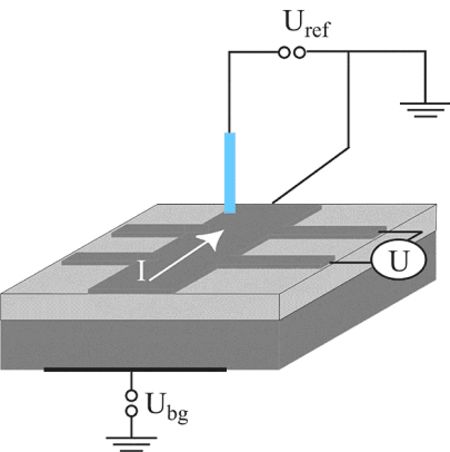Biosensors
In order to understand the complex and various mechanisms underlying the cycle of life, it will be a key issue to understand the interaction between different biomolecules. Current techniques to detect interactions use labels which are attached to the molecule of interest. This labelling procedure involves additional preparation steps, which are expensive, often toxic and difficult to perform. Moreover, for complex molecules, such as proteins, labelling may also result in an inactivation of key properties of the molecule. Label free detection mechanism is therefore of very high interest.
In our approach, we try to make use of the electrical properties of Silicon-on-Insulator (SOI) substrates. These substrates consist of a very thin, surface near (1-2 nm) layer of conducting silicon covered by native silicon oxide. This conducting layer is isolated from the bulk wafer by a thick insulating oxide. Any change at the surface of this layer system will result in a change of the space charge region in the silicon layer and can therefore be detected by means of very sensitive current measurements.
